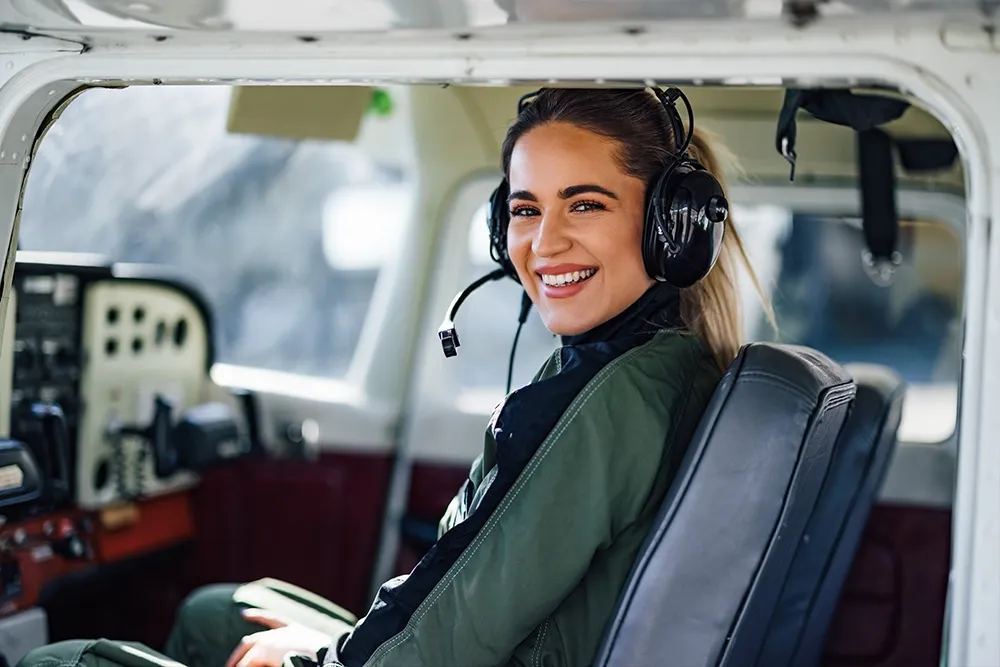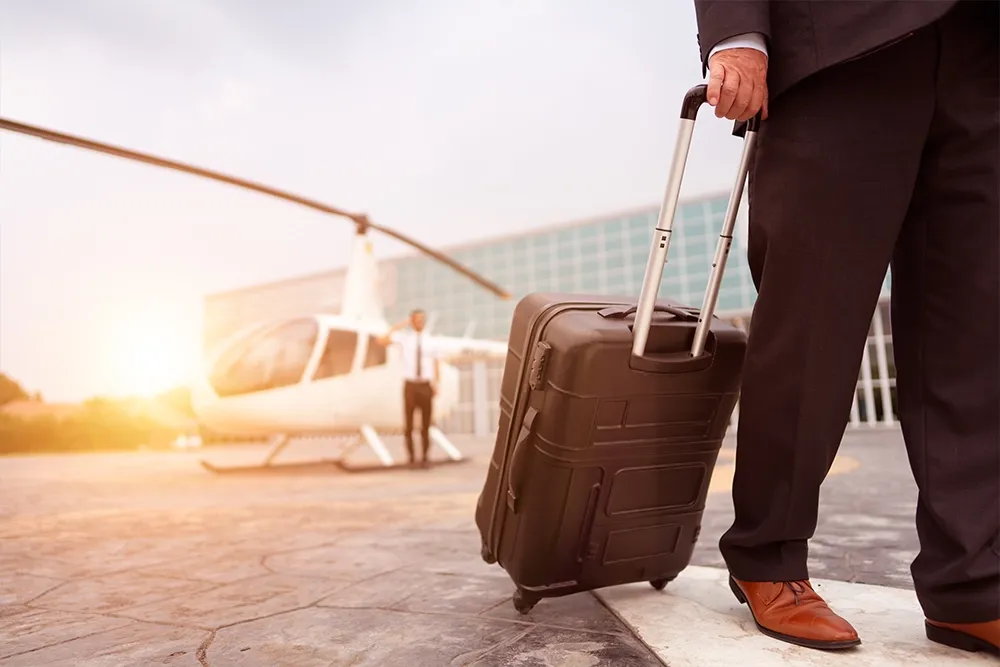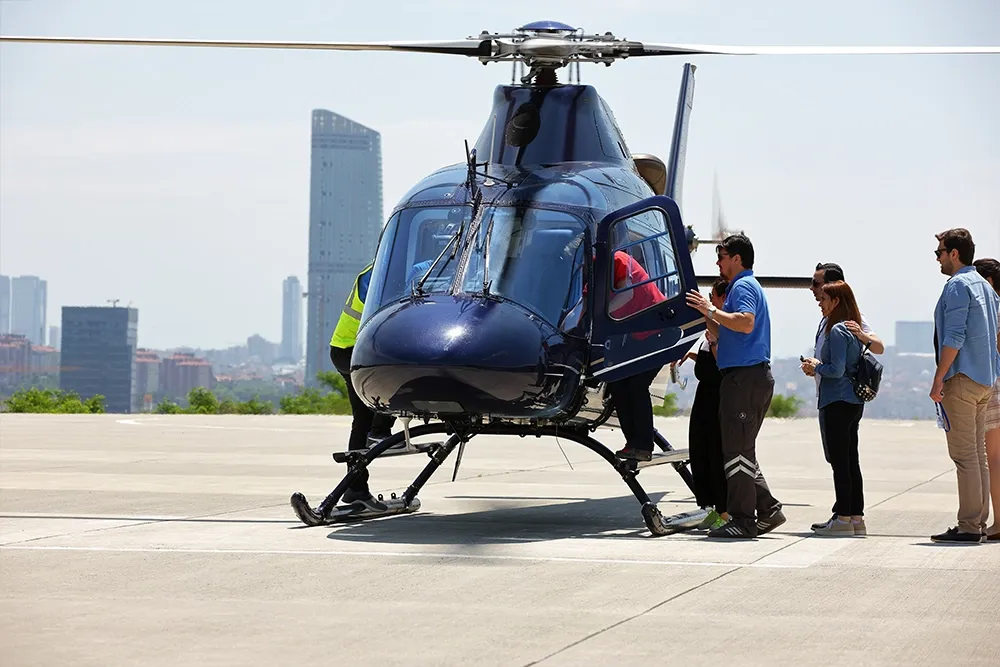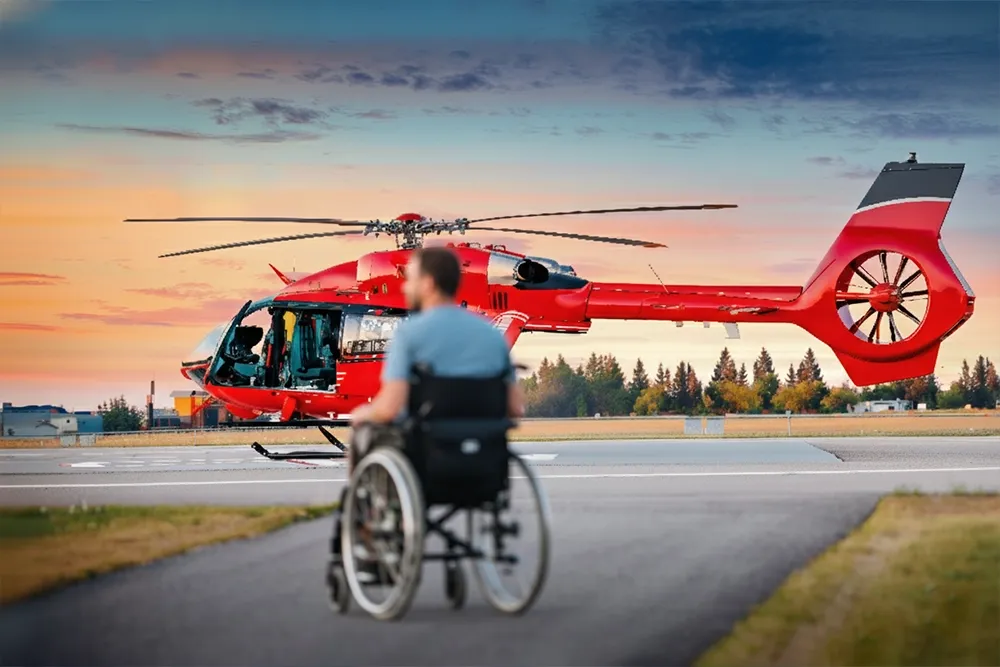Few experiences rival the thrill of a helicopter trip in Dubai. From hovering above the Palm Jumeirah to seeing the Burj Khalifa from above, the city’s skyline offers views that are impossible to match. But for many travelers, the excitement comes with an unwelcome companion: helicopter motion sickness.
Motion sickness in helicopters is more than just a minor inconvenience. It can turn what should be a memorable adventure into a stressful experience. The good news? With the right tips, you can enjoy your flight nausea-free. This guide provides helicopter ride sickness tips, showing you exactly how to prevent motion sickness on a helicopter tour and enjoy every moment of your aerial journey.
Why Helicopter Motion Sickness Happens
Unlike airplanes, helicopters move in multiple directions: up, down, sideways, and even hover. This unique movement pattern creates a mismatch between your inner ear and your visual perception. Your inner ear senses motion, but your eyes may see a relatively stable cabin, this sensory conflict triggers the symptoms of motion sickness.
Common signs include:
- Nausea and queasiness
- Dizziness or lightheadedness
- Cold sweats
- Headaches
- Fatigue
Understanding why it happens is the first step in preventing it. Helicopter vibrations, rapid ascents or descents, and tight turns intensify these sensory conflicts, making proactive measures essential. Additionally, understanding all the safety measures of helicopter rides makes it easy for you as you take off.
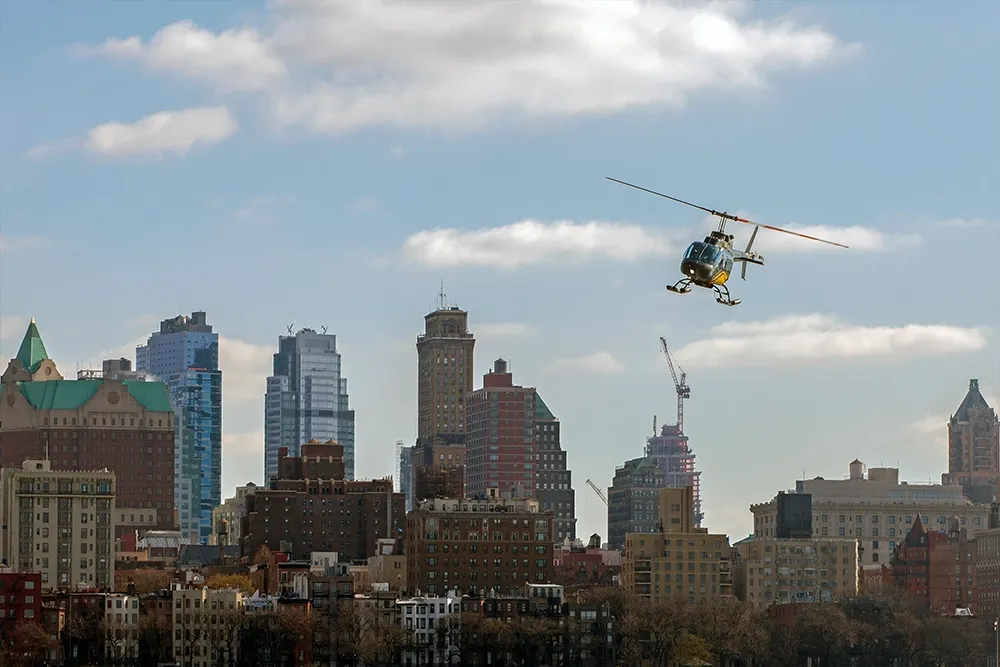
Pre-Flight Strategies: Preparing Your Body
Preparation starts well before boarding the helicopter. Simple adjustments to what you eat, how you hydrate, and even how you plan your day can make a big difference.
Eat Smart
A heavy meal can increase nausea, while an empty stomach can make you feel weak. Opt for small, bland snacks like crackers, toast, or a banana. Avoid greasy, spicy, or acidic foods before your helicopter trip in Dubai.
Hydrate Wisely
Dehydration amplifies motion sickness. Drink water before the flight, but avoid excessive caffeine, carbonated beverages, or alcohol. These can dehydrate you or irritate your stomach.
Choose Your Seat Carefully
If possible, request a front seat near the pilot or the helicopter’s center of gravity. These positions experience less movement than rear seats, which can sway more during turns and vibrations.
Dress Comfortably
Light, breathable clothing helps regulate your body temperature, which reduces nausea risk. Sunglasses can also prevent glare from sunlight reflecting off the desert or sea—minimizing visual overstimulation.
Consider Preventive Remedies
If you’re prone to motion sickness, preventive measures can help:
- Over-the-counter medications: Dimenhydrinate (Dramamine) or Meclizine (Bonine) taken 30–60 minutes before takeoff.
- Natural remedies: Ginger tablets, candies, or tea are effective and non-drowsy.
- Always consult your physician before using medication.
In-Flight Techniques:How to Stay Nausea-Free
Even with preparation, in-flight strategies make a huge difference. Here’s how to stay comfortable while enjoying the views.
Focus on a Stable Point
Looking at the horizon or a distant landmark helps align visual input with your inner ear signals. Avoid looking down or moving your head abruptly.
Control Your Breathing
Slow, steady breaths reduce nausea. Inhale through your nose for four seconds, hold for two, and exhale through your mouth for six. This stabilizes oxygen levels and soothes the vestibular system.
Maximize Airflow
Helicopter cabins can become warm and stuffy, especially during Dubai flights. Open vents for fresh air or request an adjustment from the pilot. Cooler air helps reduce nausea.
Avoid Reading or Screens
Books, phones, or cameras can worsen motion sickness. Your eyes need to track the external environment, not fixed objects in the cabin.
Let Your Body Move Naturally
Trying to resist the helicopter’s motion increases discomfort. Relax your muscles and follow the helicopter’s movements for a smoother experience.
Try Acupressure Bands
Wristbands applying pressure to the Nei-Kuan (P6) point can help reduce nausea. These are especially useful for travelers who prefer drug-free solutions.
Timing and Environmental Considerations
When planning a helicopter tour in Dubai, timing can affect your susceptibility to motion sickness:
- Early mornings: Cooler air and less turbulence make for smoother flights.
- Avoid midday flights: Heat and glare from the sun increase discomfort.
- Peak season: October to April offers clearer skies and calmer air, reducing the likelihood of nausea.
Environmental awareness, combined with pre-flight preparation, ensures a more comfortable experience.
Post-Flight Recovery Tips
Even with careful planning, mild dizziness or nausea can occur after landing. Here’s how to recover quickly:
- Step outside for fresh air and take slow, deep breaths.
- Sip water and have a light snack to stabilize blood sugar.
- Avoid immediately moving to another vehicle or engaging in strenuous activity.
- Rest in a reclining position if needed.
These measures help your body readjust and prevent lingering discomfort.
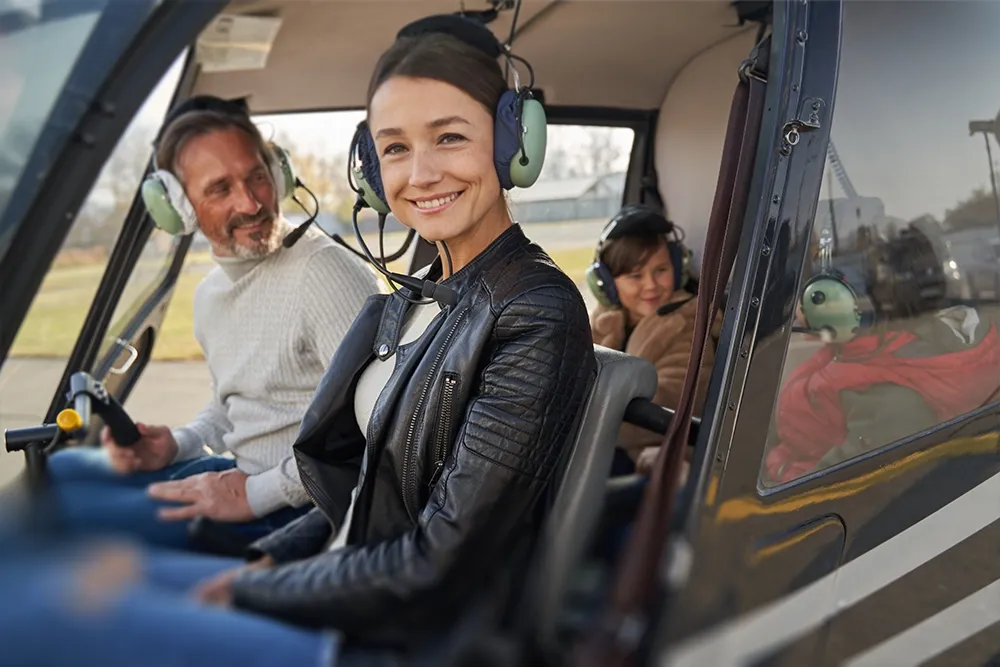
Quick Helicopter Ride Sickness Checklist
| Step |
Action |
Benefit |
| Pre-Flight Snack |
Eat light, bland food |
Stabilizes stomach |
| Hydration |
Drink water, avoid caffeine/alcohol |
Prevents dehydration-related nausea |
| Seat Selection |
Front/center |
Reduces motion perception |
| Clothing |
Light and breathable |
Keeps body temperature regulated |
| Medication/Remedies |
Ginger, Dramamine |
Prevents onset of symptoms |
| Visual Focus |
Look at horizon |
Aligns inner ear and visual signals |
| Airflow |
Open vent or use cabin AC |
Keeps cabin environment comfortable |
Experiencing a helicopter ride in Dubai doesn’t have to be stressful or uncomfortable. By following these practical helicopter ride sickness tips and understanding how to prevent motion sickness on a helicopter tour, you can focus entirely on the breathtaking views instead of your stomach and enjoy an anxiety free helicopter ride.
Relax, breathe steadily, and let the helicopter carry you across Dubai’s skyline; nausea-free.
FAQs
- Can helicopter motion sickness affect everyone?
Not everyone experiences it, but first-time riders or those prone to motion sickness are at higher risk.
- Are there natural ways to prevent nausea on a helicopter?
Yes—ginger, acupressure wristbands, and focusing on the horizon are proven, drug-free methods.
- Which seats are best for nausea-prone passengers?
Forward-facing seats near the pilot or the center of gravity minimize swaying and reduce motion sickness.
- Does Dubai’s environment make motion sickness worse?
The heat, glare, and desert/sea contrast can intensify sensory confusion, but careful preparation mitigates these effects.
